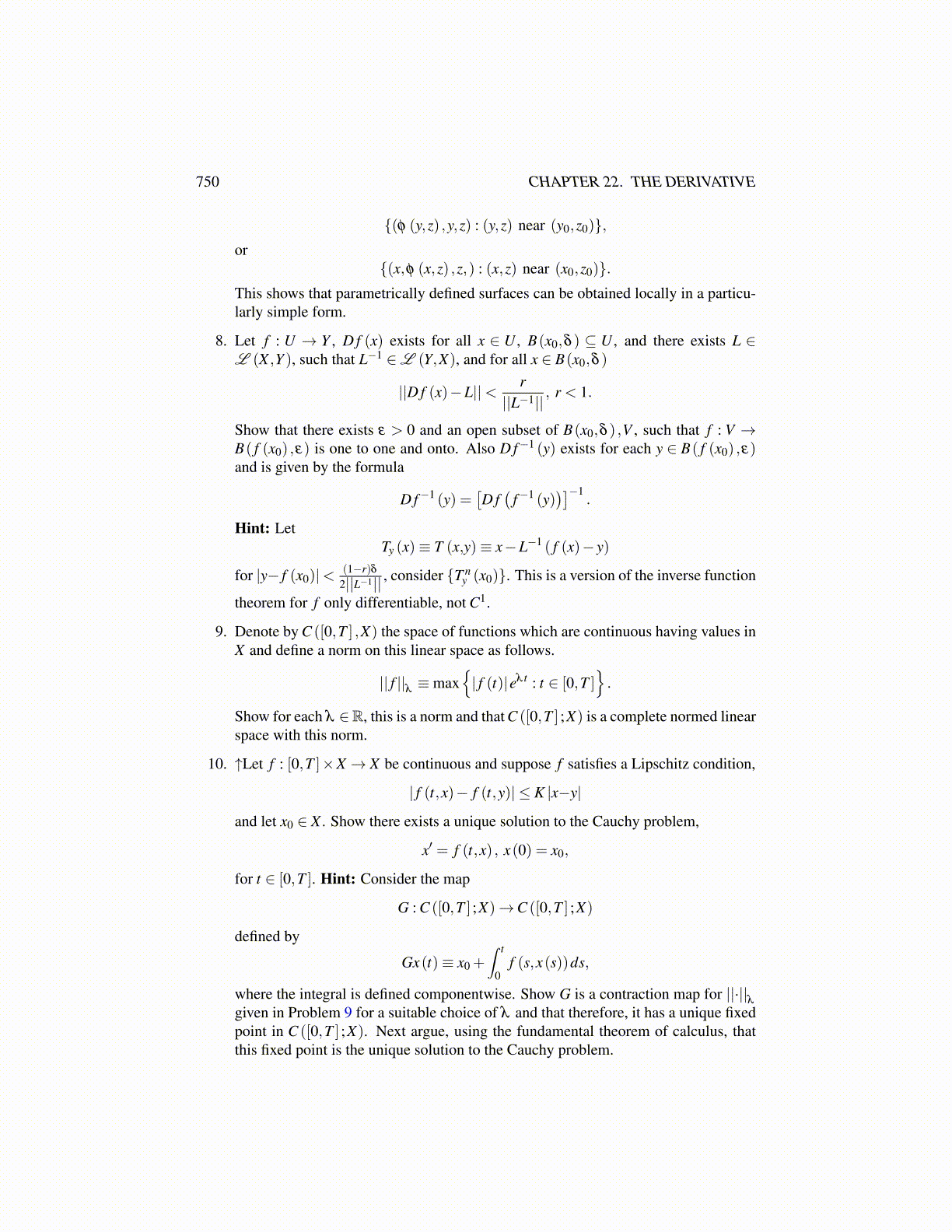
750 CHAPTER 22. THE DERIVATIVE
{(φ (y,z) ,y,z) : (y,z) near (y0,z0)},or
{(x,φ (x,z) ,z,) : (x,z) near (x0,z0)}.This shows that parametrically defined surfaces can be obtained locally in a particu-larly simple form.
8. Let f : U → Y , D f (x) exists for all x ∈ U , B(x0,δ ) ⊆ U , and there exists L ∈L (X ,Y ), such that L−1 ∈L (Y,X), and for all x ∈ B(x0,δ )
||D f (x)−L||< r||L−1|| , r < 1.
Show that there exists ε > 0 and an open subset of B(x0,δ ) ,V , such that f : V →B( f (x0) ,ε) is one to one and onto. Also D f−1 (y) exists for each y ∈ B( f (x0) ,ε)and is given by the formula
D f−1 (y) =[D f(
f−1 (y))]−1
.
Hint: LetTy (x)≡ T (x,y)≡ x−L−1 ( f (x)− y)
for |y− f (x0)|< (1−r)δ2||L−1|| , consider {T n
y (x0)}. This is a version of the inverse function
theorem for f only differentiable, not C1.
9. Denote by C ([0,T ] ,X) the space of functions which are continuous having values inX and define a norm on this linear space as follows.
|| f ||λ≡max
{| f (t)|eλ t : t ∈ [0,T ]
}.
Show for each λ ∈R, this is a norm and that C ([0,T ] ;X) is a complete normed linearspace with this norm.
10. ↑Let f : [0,T ]×X → X be continuous and suppose f satisfies a Lipschitz condition,
| f (t,x)− f (t,y)| ≤ K |x−y|
and let x0 ∈ X . Show there exists a unique solution to the Cauchy problem,
x′ = f (t,x) , x(0) = x0,
for t ∈ [0,T ]. Hint: Consider the map
G : C ([0,T ] ;X)→C ([0,T ] ;X)
defined by
Gx(t)≡ x0 +∫ t
0f (s,x(s))ds,
where the integral is defined componentwise. Show G is a contraction map for ||·||λ
given in Problem 9 for a suitable choice of λ and that therefore, it has a unique fixedpoint in C ([0,T ] ;X). Next argue, using the fundamental theorem of calculus, thatthis fixed point is the unique solution to the Cauchy problem.